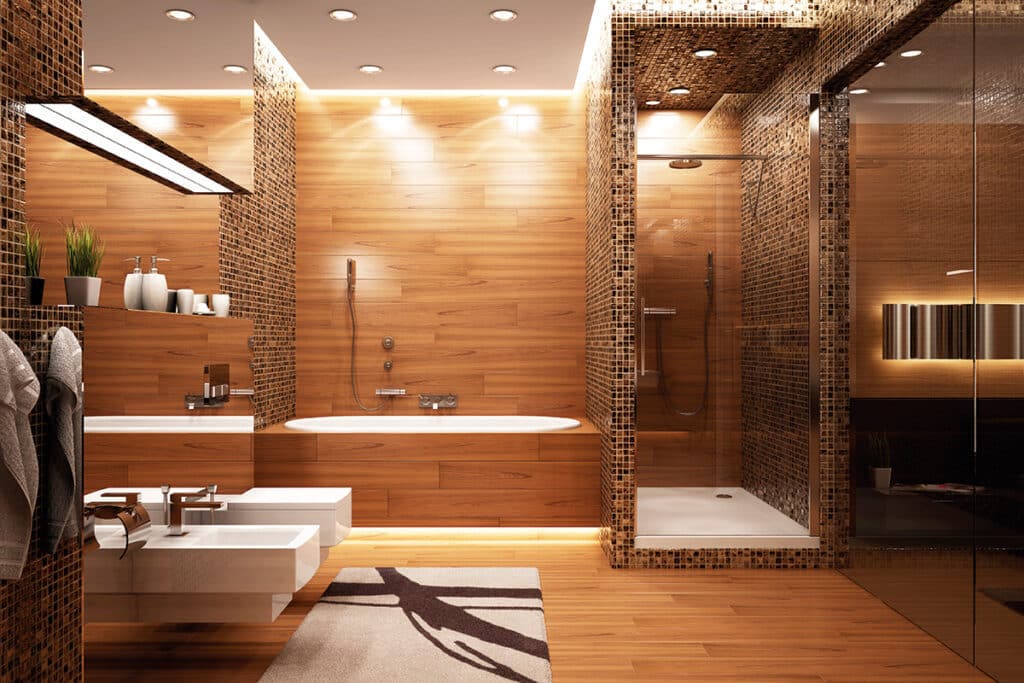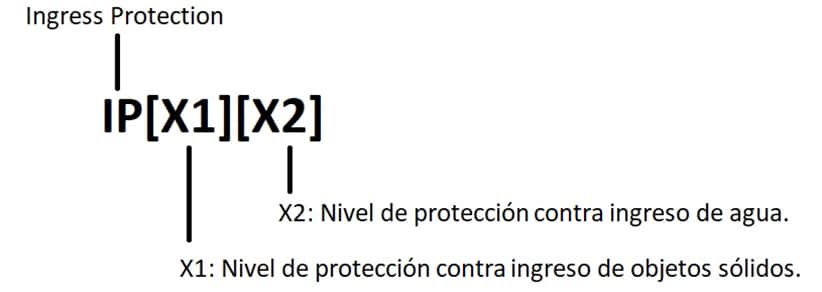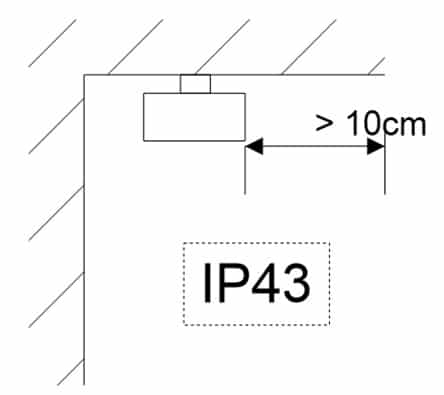In this new technical article, we’ll be discussing the concept of the Ingress Protection (IP) rating, which sometimes generates a certain level of confusion in its interpretation. Furthermore, alongside its technical explanation, we’ll try to outline aspects you should keep in mind.
An IP rating is the parameter that allows us to classify electrical equipment with a rated voltage that does not exceed 72 kW, according to its level of protection against the ingress of dust and water.
This classification of the IP rating is provided in the standard IEC 60529:2018 Degrees of protection provided by enclosures (IP Code).
TABLE 1 – DEGREES OF PROTECTION INDICATED FOR THE FIRST DIGIT CHARACTERISTIC [X1] [X1]
- 0 – NOT protected.
- 1 – Protected against solid objects larger than 50 mm.
- 2 – Protected against solid objects larger than 12 mm.
- 3 – Protected against solid objects larger than 2.5 mm.
- 4 – Protected against solid objects larger than 1 mm.
- 5 – Protected against dust.
- 6 – Fully protected against dust.
2. DEGREES OF PROTECTION INDICATED FOR THE SECOND DIGIT CHARACTERISTIC [X2] [X2]
- 0 – NOT protected.
- 1 – Protected against vertically dripping water.
- 2 – Protected against dripping water when tilted up to an angle of 15°.
- 3 – Protected against spraying water.
- 4 – Protected against water splashes.
- 5 – Protected against water jets.
- 6 – Protected against powerful water jets or rough seas.
- 7 – Protected against immersion (it must withstand immersion at 1 m for 30 min with no water ingress).
- 8 – Protected against continuous immersion.
- 9 – Protected against powerful high-temperature water jets.
As the information given above demonstrates, electrical equipment is classified with a protection rating comprised of two digits, which are independent of one another and which will require similar tests for their indexing.
Using a light fitting (electrical equipment) classified as IP65 as an example, we can say that:
- X1 = 6; meaning that in the test on its level of protection against the ingress of solid objects, the light fitting was proven to be fully protected against dust.
- X2 = 5; meaning that in the test on its level of protection against the ingress of water, the light fitting was proven to be protected against water jets
- The light fitting will be suitable for use in facilities requiring full protection against dust and protection against water jets.
Important aspects to consider:
- The IP rating is only discerned via the corresponding test.
- The IP rating is comprised of two independent digits, meaning a rating of IP53, when talking about protection against water, would have the same level of protection as a rating of IP33 or IP43, and a lower level of protection than a rating of IP44. This is because the level of protection against water ingress is denoted by the second digit (X2) and 3<4.
- In some scenarios, a higher level of protection does not mean compliance with tests for lower protection ratings as these tests are not complementary. This is the case for some products, such as UPLIGHTS, which must not only pass the IP67 test, but which must also pass the IP65 test.
- There are certain products that comply with a specific level of protection against water ingress, however, this level is conditional to the product’s position in relation to nearby cornices. In this case, its instruction manual should indicate this with a diagram similar to the following.
Rating of IP43, provided it is installed more than 10 cm from a cornice.
- The level of protection is always connected to the light fitting’s characteristics and, therefore, if a light fitting exclusively for indoor use is, for example, protected against water jets with a rating of IP65 this does not mean that this light fitting can be installed outdoors, as the manufacturer has deemed it to be exclusively for indoor use.
- A rating of IP65 does not protect light fittings against water accumulating on top of them, for which reason installation is key to ensuring this level of protection is effective. For example, in outdoor installations of LED strips with a rating of IP65, the strips should not be positioned such that rainwater (or water from any other source) can accumulate on top of them.
- Light fittings with a rating of IP67 should not be used in facilities in which water can accumulate for more than 30 min.
- 8. In facilities like swimming pools and fountains where a product must be immersed in water continuously, only the use of light fittings with a rating of IP68 is recommended, provided this form of use is authorised by the product’s manufacturer.
We hope you found this information helpful and it answers some of the questions that arise when interpreting IP ratings.




